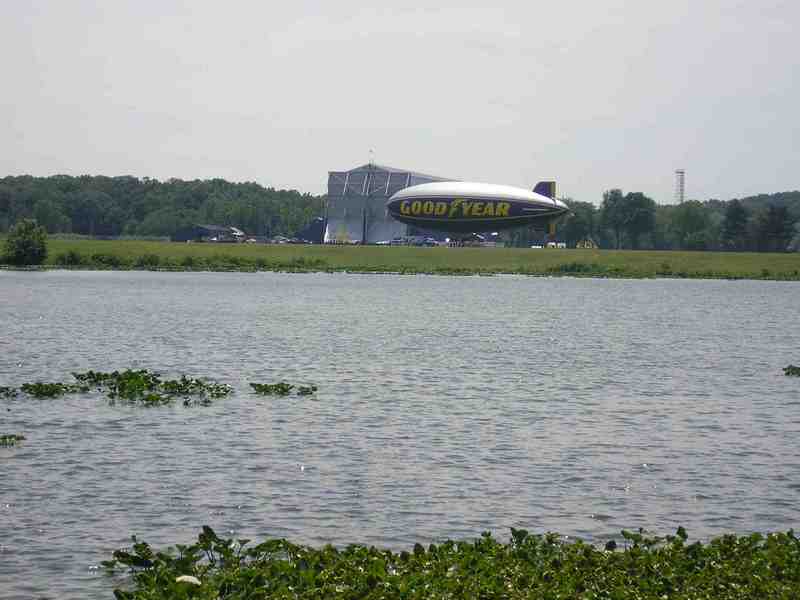Akron Airdock

When was the last time you saw a blimp in the sky? For those who live in Akron, a blimp sighting is as predictable as seeing the sun rise in the east. It has been that way since the construction of the Akron Airdock in 1929. Designed by the Wilbur Watson Engineering Co. of Cleveland and built by the Goodyear Zeppelin Corporation for the construction and housing of lighter-than-air ships (as blimps are sometimes called), the Airdock was once the world's largest structure without interior supports.
The Airdock is gigantic. Stretching 1,175 feet in length and 325 feet in width, the structure covers 364,000 square feet of ground. That means that almost seven football fields can fit inside it. The outer skin of the structure has been described as "half a silkworm's cocoon, cut in half the long way." The top of this "cocoon" reaches 211 feet high. Each end of the Airdock has a pair of huge doors that weigh 609-tons apiece. Each door rests on forty wheels and railroad tracks that allow them to open and close. The Airdock cost $2.2 million to build.
The first two dirigibles launched from the Airdock were the Akron (ARS-4) in 1931 and its sister the Macon (ARS-5) in 1934. Goodyear built these for use by the Navy, but the two airships had short lives. The Akron fell from the sky on April 4, 1933, in a violent electrical storm off the coast of New Jersey, killing 73 passengers. The Macon also crashed in 1935, ending up in the Pacific Ocean.
The blimps Goodyear produced at the Airdock were mainly intended for military use. The development of passenger blimps, once thought to be a viable form of transportation, was abandoned when it became clear that planes were the future of commercial air transport. Military blimps continued to be developed in Akron, however, serving as both reconnaissance planes and as experimental "flying aircraft carriers" that launched smaller airships. The last blimp built in the Airdock was the Navy's ZPG-3W, completed in 1960.
After 1960, the Airdock served for a time as the location of Goodyear's photographic division. It has also held rallies for the United Way and Presidential Candidate Bill Clinton, the latter drawing a crowd of 30,000 to the Airdock in 1992. Goodyear sold their Aerospace plant and the Airdock to the Loral Corporation in 1987, who ended up selling the property to Lockheed Martin in 1996. Lockheed Martin owns the Airdock today and conducts well-concealed aircraft research inside the building.
Goodyear still maintains a blimp hangar, home to one of the famous Goodyear blimps seen at sporting events, at Wingfoot Lake in nearby Suffield. Wingfoot Lake was the original site of Goodyear's Aeronautics Department. In 1917, the company began building blimps and training military pilots at the site. Shortly thereafter, the Navy took over the facility and operated it as the United States Airship Training Station from 1917 until 1921. Goodyear moved its aeronautics program to the Airdock in 1929 and, after using the Wingfoot Lake site for a variety of purposes, sold most of the land to the State of Ohio in 2009 to create Wingfoot Lake State Park.
Images








